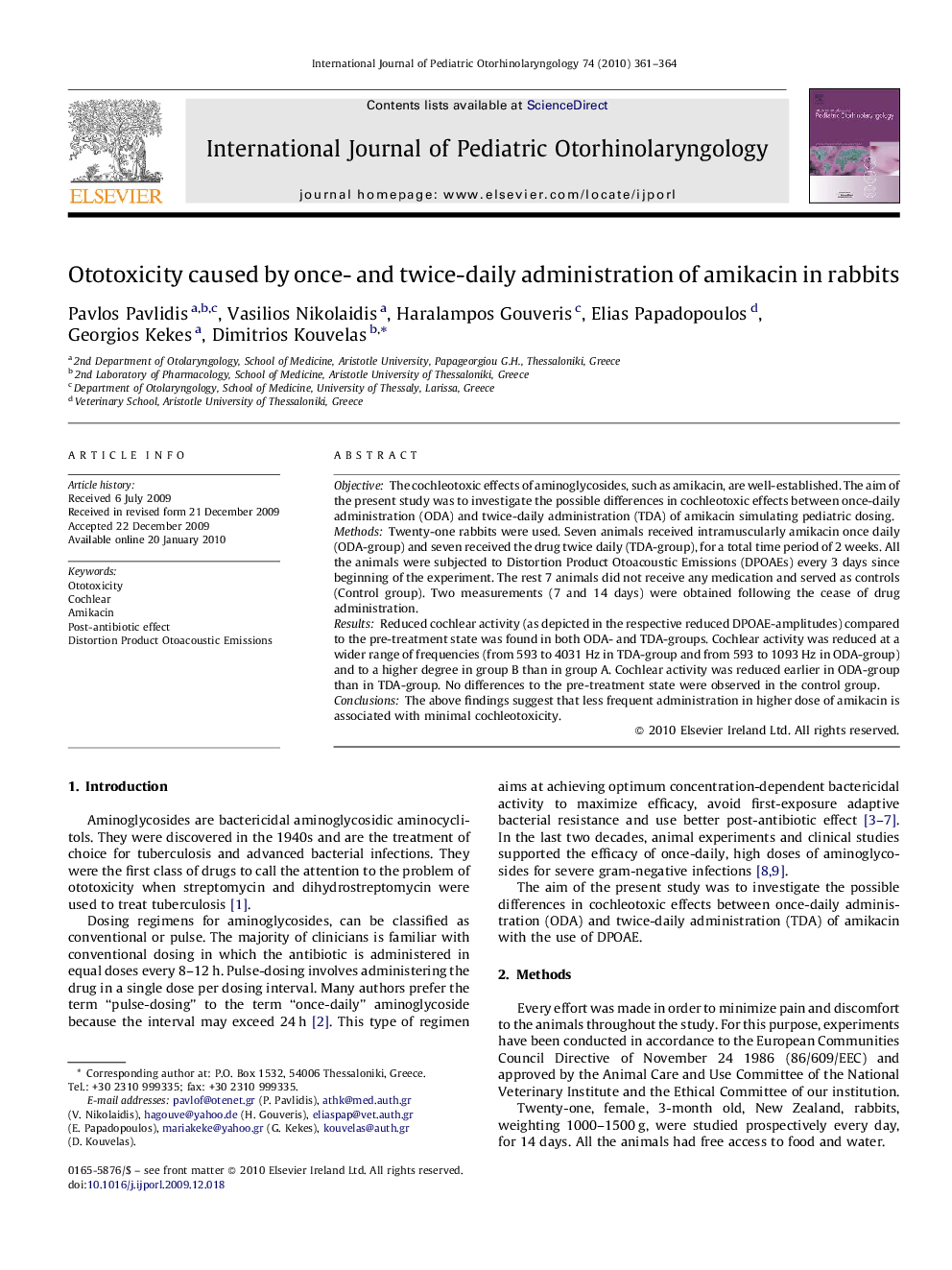| Article ID | Journal | Published Year | Pages | File Type |
|---|---|---|---|---|
| 4114590 | International Journal of Pediatric Otorhinolaryngology | 2010 | 4 Pages |
ObjectiveThe cochleotoxic effects of aminoglycosides, such as amikacin, are well-established. The aim of the present study was to investigate the possible differences in cochleotoxic effects between once-daily administration (ODA) and twice-daily administration (TDA) of amikacin simulating pediatric dosing.MethodsTwenty-one rabbits were used. Seven animals received intramuscularly amikacin once daily (ODA-group) and seven received the drug twice daily (TDA-group), for a total time period of 2 weeks. All the animals were subjected to Distortion Product Otoacoustic Emissions (DPOAEs) every 3 days since beginning of the experiment. The rest 7 animals did not receive any medication and served as controls (Control group). Two measurements (7 and 14 days) were obtained following the cease of drug administration.ResultsReduced cochlear activity (as depicted in the respective reduced DPOAE-amplitudes) compared to the pre-treatment state was found in both ODA- and TDA-groups. Cochlear activity was reduced at a wider range of frequencies (from 593 to 4031 Hz in TDA-group and from 593 to 1093 Hz in ODA-group) and to a higher degree in group B than in group A. Cochlear activity was reduced earlier in ODA-group than in TDA-group. No differences to the pre-treatment state were observed in the control group.ConclusionsThe above findings suggest that less frequent administration in higher dose of amikacin is associated with minimal cochleotoxicity.
